Orava Castle: continuation of the story
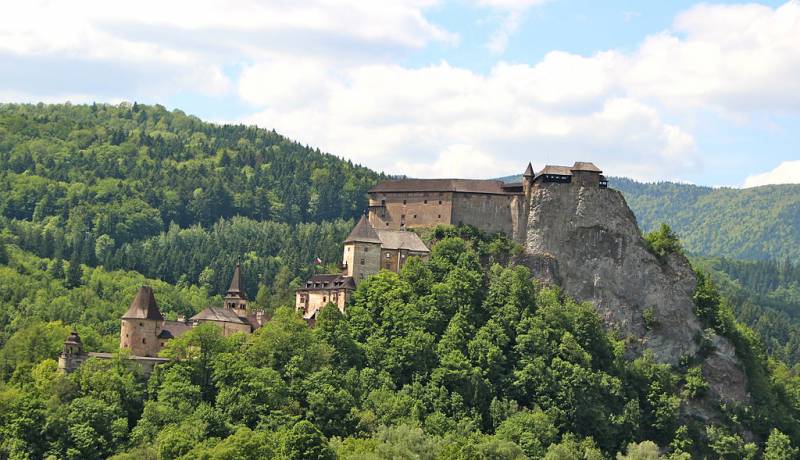
Orava Castle. Photo by Ralph Lotus
To become queen, your great-grandmother executed her sister.
But your grandfather took the crown from her and imprisoned the deposed mother in a monastery.
Your father executed your grandfather to sit on the throne for 77 days...
Do you remember? He was found dead in bed.
And your mother became the dowager queen.
Then your older brother became king.
But he did not listen to the instructions of his ministers.
Remember what happened to him?
I will remind you. He went to the mountains and...
And fell into the abyss.
"Kingdom of Crooked Mirrors" (1963)
Castles of Europe. So, we also return to the Orava Castle, now in order to get acquainted with its history. And his story is rich and very interesting. Although the presentation looks a bit dry. Here you need to call on the help of fantasy and think about what could be behind these mean lines.
Let's start with the fact that the first known written mention of the existence of Orava Castle took place in 1267. By deed of gift, the castle became the property of the Hungarian king Béla IV after it was taken from its original owner Mika from the Balassa family (voivode of Zvolensky district) in exchange for the districts of Varin, Žilina and Suchany.
Then in 1298 the magnate Matthew Čak from Trenčín captured Orava and the castle. Since 1333, Orava Castle has been in royal possession. How?
It’s very simple: another local magnate helped King Charles Robert of Anjou to deprive Matvey Csak from Trencin of his property, and Orava Castle ended up in the hands of the king. All according to the saying, who is stronger - that's true!
But the transfer of the castle from hand to hand did not end there.
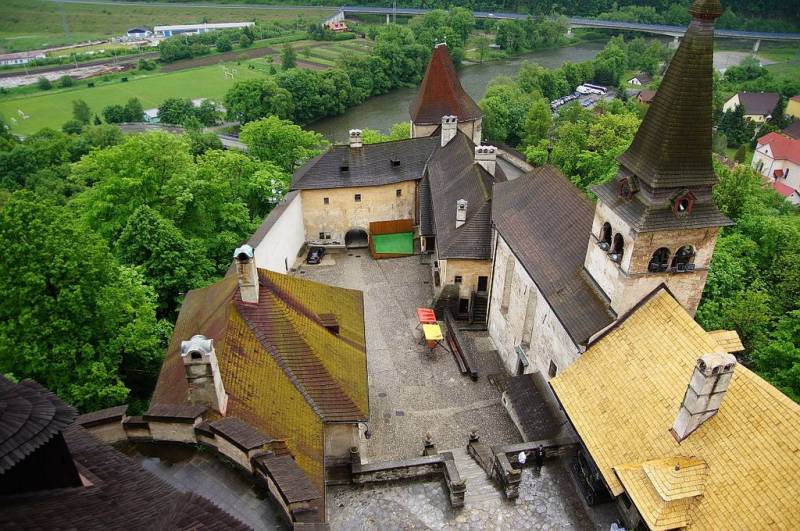
View of the courtyard. Photo by Stanislav Ludvinsky
In 1420, Orava Castle was taken over by Stibor of Szybozice, a devoted supporter of Sigismund of Luxembourg, Holy Roman Emperor and King of Hungary. But in 1441, during the civil war for the Hungarian crown, Orava Castle was captured by Peter Komorowski, one of the leaders of the former Hussite warriors who supported Ladislav the Posthumous.
His strength lasted for 30 years, and then in 1474, the Hungarian king Matthias (Matthias) Corvinus took possession of the castle and began its first large-scale reconstruction. The castle acquired a decent appearance, and then in 1482 Matthias Corvinus gave it to his illegitimate son and heir Janos.
After the death of Janos Korvin in 1504, Janos Zapolyai became the owner of Orava Castle, and he entrusted the management of it to Peter and Nikolai Kostka. Here, in 1526, the epic battle of Mohacs took place. After losing the battle, János Zápolyai attempted to seize the Hungarian throne and opposed Ferdinand I of Habsburg. But in 1534, Nikolai Kostka went over to the side of Ferdinand I of Habsburg, who awarded him the honorary title of ban, and Orava Castle came into the possession of Kostka’s relative, Janos Dubovetsky.
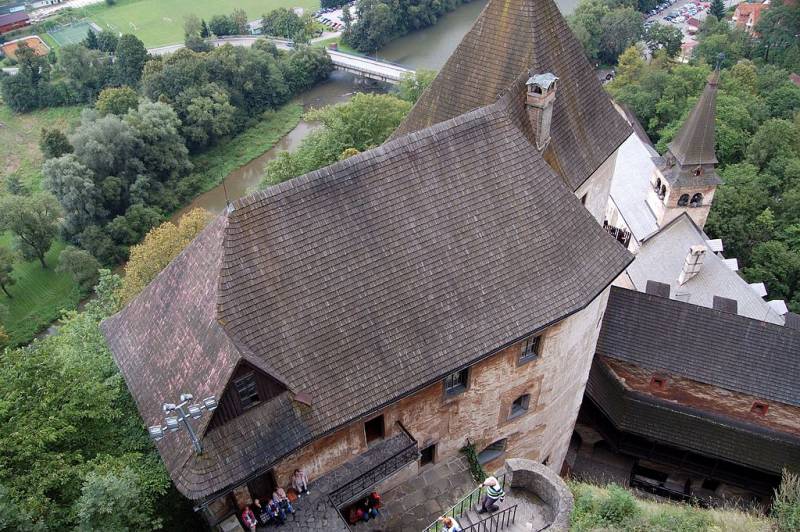
The roof of Janos Dubovetsky's palace is made of wooden blocks! Photography by Miro Svorka
Having taken possession of the castle in 1540, Janos Dubovetsky began extensive work to strengthen the castle. And on time. Because in 1545, after the death of Janos, Wenceslav Sedlnicki quarreled over the ownership of Orava Castle with Nikolai Kostka, and the matter smelled of another siege, war and fire. But in 1549, the emperor ended their dispute by appointing Siedlnicki as castellan of the castle.
However, in 1556, the county of Orava, together with the castle, passed into the possession of Francis Thurzo, who not only started a new reconstruction, but also began the colonization of the previously sparsely populated Upper Orava. In 1574 he died and his son Dörd, who grew up and was educated at the court of Archduke Ernst III of Habsburg, became his heir.
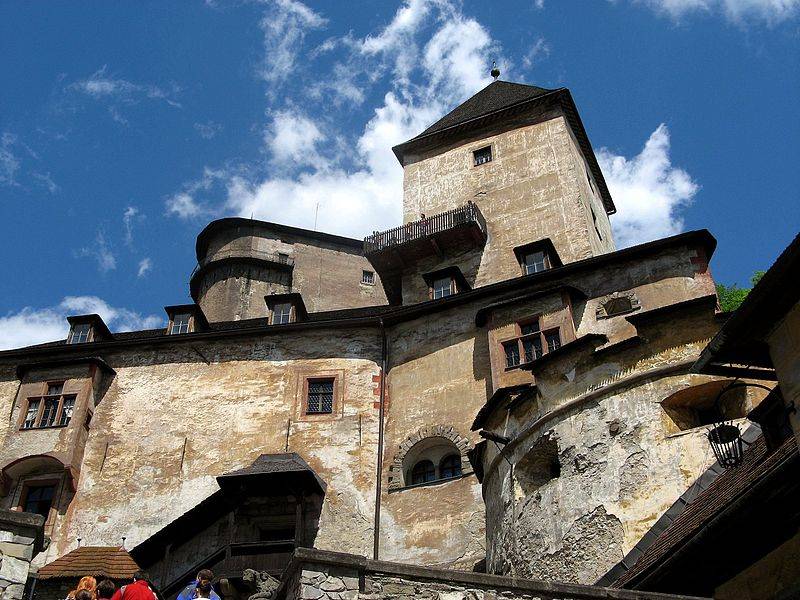
You look up and the hat falls off your head!
During the first anti-Habsburg uprising led by Stefan Bosskai, rebel forces attempted to capture Orava Castle, but were unsuccessful. But for his loyalty to the Habsburgs during the Fifteen Years' War against the Ottoman Empire and the Bocskai uprising, György Turzó received the title of count and as a reward the inherited possession of the land of Orava. And in 1609 he was awarded the title of Palatine of Hungary - the second most important position in Hungary after the king.
He was buried in the family crypt in the chapel of St. Michael in Orava Castle, and his only son Emerich became his heir. But he soon died too. The male branch of the family was cut short, and the head of the Orava district became Emerich's mother Erzhebeta Thurzo (née Czobor).
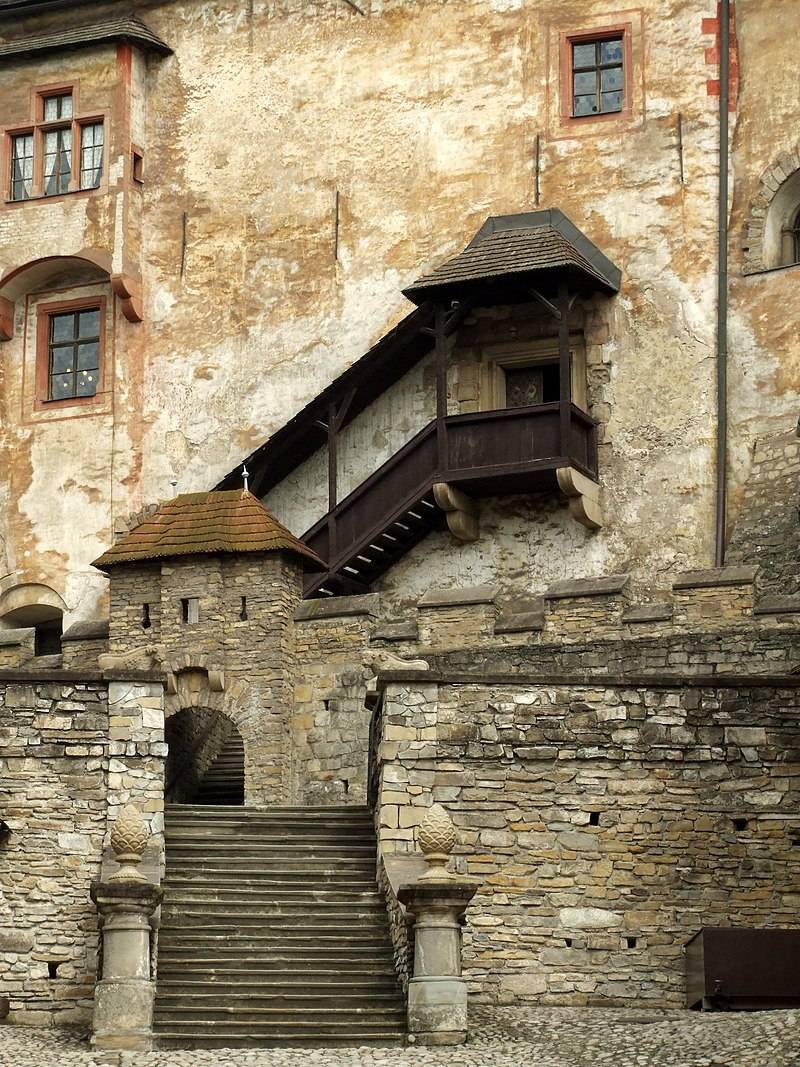
Everything here literally breathes antiquity! Photo by Modris Putnes
After the death of Elisabeth, all the legitimate heirs of the Thurzo family gathered in Lietava Castle and formed the Orava Compassorate (joint possession) in order to control the county with a residence in Orava Castle and prevent the division of family holdings. At the same time, management was transferred into the hands of an elected "director", who was supposed to redistribute the profit from the compass among all the remaining owners.
And everything would be fine if one of the directors did not support the anti-Habsburg uprising, led by the palatine Stefan Vesselegni. In response to such disloyal behavior, Emperor Leopold I ordered the confiscation of his property and sent his troops to Orava Castle. As a result, the castle garrison surrendered, and Nicholas Draskovic was chosen as the new “director”, expressing his humility and loyalty.
But in 1672, the “kuruci” (soldiers and refugees who joined the anti-Habsburg conspiracy) entered Orava, where they were joined by Protestant peasants. Under the leadership of Kaspar Pik, the “Kuruc” detachments managed to take the Orava Castle, but they only owned it for a short time.
Emperor Leopold I again sent his army to Orava, with the help of local Catholics, crushed the uprising and returned the castle to the crown. Meanwhile, the uprising of the "kuruts" continued as before. And in 1677 the castle was captured by them once again, but by the end of the year it was recaptured without a fight by the imperial army.
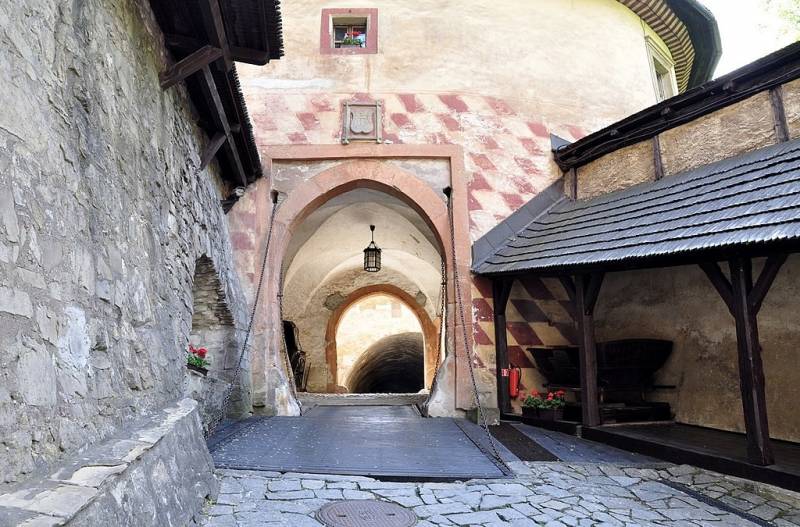
Gate with a drawbridge. Photograph by Janos Koroma
In 1683, the Kurucs again besieged Orava Castle in order to recapture it for their commander Emerich Thököly. But they failed to take it until the arrival of the Polish army led by Jan Kazimierz Sapieha.
The war cost Orava dearly. 27 villages were burned and many civilians were killed. And then the “Kurucians” managed to capture Orava Castle in 1708. But after the victorious Battle of Trencin, Habsburg troops led by Jan Palffy besieged the castle, and it all ended with the surrender of the Kuruc forces in the spring of 1709.
The compass was restored and under his leadership the colonization of Orava was completed.
At the same time, its catholization took place. Thus, the Protestant chapel in Orava Castle was Catholicized and dedicated to St. Michael. Its original XNUMXth-century furnishings, including the high altar, were moved to Nekpali and replaced with new Catholic Baroque furnishings.
The “Great Fire” broke out at Orava Castle in 1800. It started in the priest's house in the main courtyard, and eventually destroyed almost the entire castle complex. However, the next director of the Orava Compassorate, Franz Zichy Sr., carried out the most necessary restoration work and saved the castle from imminent destruction.
As a result of the revolution of 1848, the feudal system was abolished in Austria-Hungary, but the position of director of the Orava Compassorate was retained. Now the compassorate has turned from a feudal estate into a progressive enterprise in the woodworking industry. And in 1868, the first museum was created in Orava Castle, which was open to the public along with the castle.
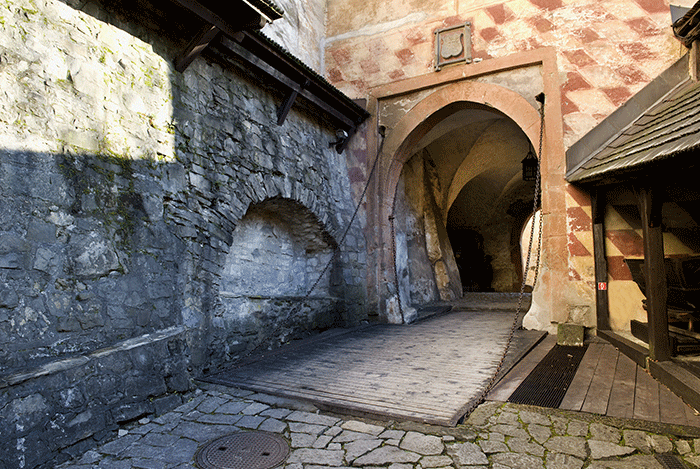
Everything inside has been restored! Photography by Janos Koroma
Under the leadership of Josef Palfi, in 1906, work began on the reconstruction of Orava Castle in a romantic style. Work began on the Corvinus Palace, on the main courtyard and in the residential tower, but the outbreak of the First World War left them unfinished.
And then in 1919, the last director of the Orava compass, Josef Palfi, died, and the board of the compass was sworn in by the newly formed Czechoslovak Republic.
During the Second World War, in the autumn of 1944, Orava Castle was occupied by the German army. And here in Orava Podzamok, after the start of the Slovak National Uprising, the first battle of the rebels with the Germans in the Orava region took place.
Finally, in 1945, after more than 300 years of existence, the Orava compass was dissolved. His forests and other possessions were transferred to the state and the surrounding villages, and it was decided to open a compassorate museum in Orava Castle. However, during the fighting and the liberation of Orava, the castle was badly damaged (mainly from the explosion of a bridge across the Orava River) and required serious restoration work.
The general restoration of Orava Castle began in 1953. In addition, the castle became the seat of the Orava National History Museum. In 1968 the Orava Castle Museum celebrated its 100th anniversary. On this occasion, several exhibitions were open to the public here (including natural history, ethnographic, archaeological and historical exhibitions).
The general restoration of the castle was completed in 1977, and the restoration of St. Michael's Chapel in 2006. Its opening ceremony took place on April 22, and on April 29, 2006, the chapel was opened to the public. On August 21 of the same year, the Chapel of St. Michael was awarded the “Cultural Monument of the Year” award in the category “Restoration of a movable or immovable cultural monument of national importance.”
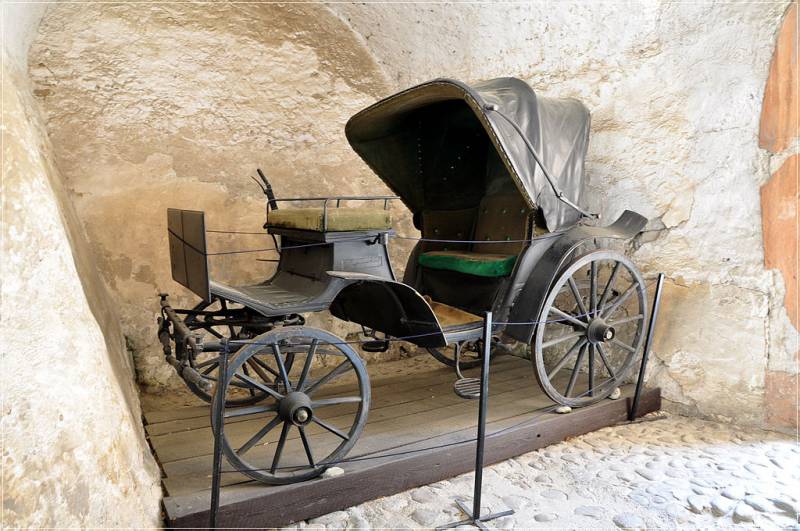
Vehicle of the XNUMXth – early XNUMXth century. Somehow it was preserved, and today it is exhibited in the castle. A trifle, as they say, but interesting to see! Photograph by Janos Koroma
Today the castle houses a number of exhibitions. Thus, in 2009, a new ethnographic gallery was prepared for the public. A fresh archaeological exhibition, opened in 2011 in the citadel of the Upper Castle, is dedicated to the prehistory of the Orava region and the history of the restoration of the Orava Castle. In 2015, another series of exhibits appeared in one of the halls of the Citadel, dedicated to films and TV series filmed at Orava Castle. And in 2016, in the restored halls on the ground floor of the Thurzo Palace, an exhibition was dedicated to the noble families associated with Orava Castle and their collections, called “The Treasury of Orava Castle”.
In 2017, restoration work began on the parsonage in the Main Courtyard, and when it was completed, a new multimedia exhibition “Orava peatlands” was opened here. So there is a lot to see in Orava Castle, and you can walk around it, moving from hall to hall, for a very long time.
Information